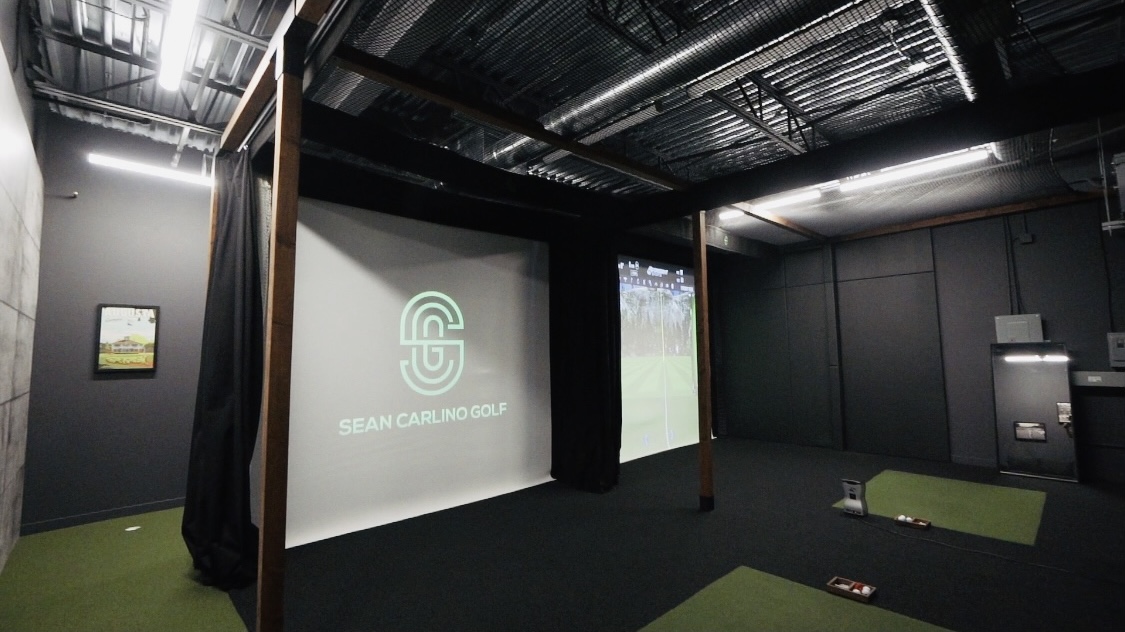Training for golf in the winter can be challenging, especially if you live in a colder climate where outdoor practice is limited. However, there are many effective ways to maintain and even improve your skills indoors. Even though the golf course may be covered in snow, there are still ways to keep your golf game sharp during the winter months.
Here are several strategies and tools to help you keep your game sharp during the winter months:
1. Use a Golf Simulator
- Set Up a Home Simulator: Using a golf simulator like the Garmin Approach R10, SkyTrak are more cost efficient ways for you to practice your full swing indoors. These simulators provide detailed feedback on ball flight, swing mechanics, and even let you play virtual rounds on famous courses.
- Simulators for Swing Improvement: Focus on specific areas of your game (e.g., distance control, accuracy) with various modes, such as driving range practice or target drills.
Benefits:
- Play golf indoors no matter the weather.
- Track data like ball speed, launch angle, and spin to make swing adjustments.
- Stay motivated by playing simulated rounds and keeping your practice fun.
2. Indoor Putting Practice
- Putting Mats: Invest in a high-quality putting mat (e.g., PuttOut or Perfect Practice Putting Mat) to improve your short game indoors. Focus on distance control, alignment, and consistency.
- Gate Drills: Use putting gates to ensure your stroke is straight. These can help improve accuracy and develop muscle memory for a consistent putting stroke.
- Putt to a Smaller Target: Train with smaller targets (like a coin) to enhance precision.
Benefits:
- Putting is a skill you can easily work on indoors.
- Improving your short game can lower your score significantly.
3. Swing Drills Without a Ball
- Mirror Work: Practice in front of a mirror to check your setup, posture, and swing mechanics. Focus on making slow, controlled swings while paying attention to the key positions (e.g., takeaway, top of backswing, impact).
- Swing Aids: Use training aids like the Orange Whip or SKLZ Gold Flex to work on rhythm, balance, and tempo. These tools help maintain strength and flexibility in your swing.
- Movement Swings: Get the club move back and forth for a few reps, letting the momentum of the club swing you into your backswing. Great way to work on moving pressure and sequence
Benefits:
- No ball required, making it easy to work on swing mechanics indoors.
- Keeps your swing feeling natural, even during the offseason.
4. Strength and Flexibility Training
- Golf-Specific Workouts: Incorporate exercises that build strength, flexibility, and balance. Focus on core strength, rotational exercises, and stability (e.g., planks, squats, lunges, and rotational medicine ball throws).
- Yoga or Pilates: Adding flexibility training to your routine can improve your range of motion and prevent injuries. Yoga and Pilates are great for building core strength and increasing flexibility, which are essential for a powerful and consistent golf swing.
- Resistance Bands: Use resistance bands for strength-building exercises targeting your core, glutes, and shoulders. These areas are crucial for generating power and maintaining balance in your swing.
Benefits:
- A stronger, more flexible body can improve your swing power and reduce injury risk.
- Helps maintain fitness and overall conditioning during the offseason.
5. Mental Game Training
- Visualization: Use mental imagery to “practice” your swing and course strategy. Visualizing successful shots can help you stay sharp and reinforce positive habits.
- Golf Books and Videos: Winter is a great time to dive into instructional materials. Watch videos or read books from top golf instructors to improve your understanding of course management, swing mechanics, and mental strategies.
- Goal Setting: Use the offseason to set goals for the upcoming season. Whether it’s improving your handicap, increasing driving distance, or becoming more accurate with your irons, setting specific goals will give you focus during your training.
Benefits:
- The mental side of golf is just as important as physical skills.
- Training your mind helps reduce pressure and improve decision-making on the course.
6. Indoor Chipping Practice
- Chipping Nets: Set up a chipping net in a garage or basement and work on controlling the trajectory and distance of your chips. This helps improve your feel and precision with your wedges.
- Target Drills: Use household items like towels or boxes as targets to practice hitting different distances with various lofts.
Benefits:
- Chipping practice improves your short game, which is critical to scoring well.
- Helps develop touch and control, even indoors.
7. Track Your Progress
- Golf Apps: Use apps like Arccos Caddie or GolfLogix to track your data throughout your practice sessions. These apps can provide insights into your strengths and weaknesses and help you plan your training.
- Video Your Swing: Record your swing using a smartphone or tablet to analyze your form. Compare it to previous videos to track improvement over the winter months.
Benefits:
- Monitoring your progress keeps you motivated and on track with your goals.
- Video analysis allows you to see the details of your swing and make necessary adjustments.
Remember, consistency is key. Even short, regular practice sessions can make a significant difference in your golf game. By incorporating these training methods into your routine, you can stay sharp and ready to hit the course when the weather warms up.
Inquire About Golf Lessons Today
Have a few questions before enrolling? Please use the form below and golf coach Sean Carlino will help you out

